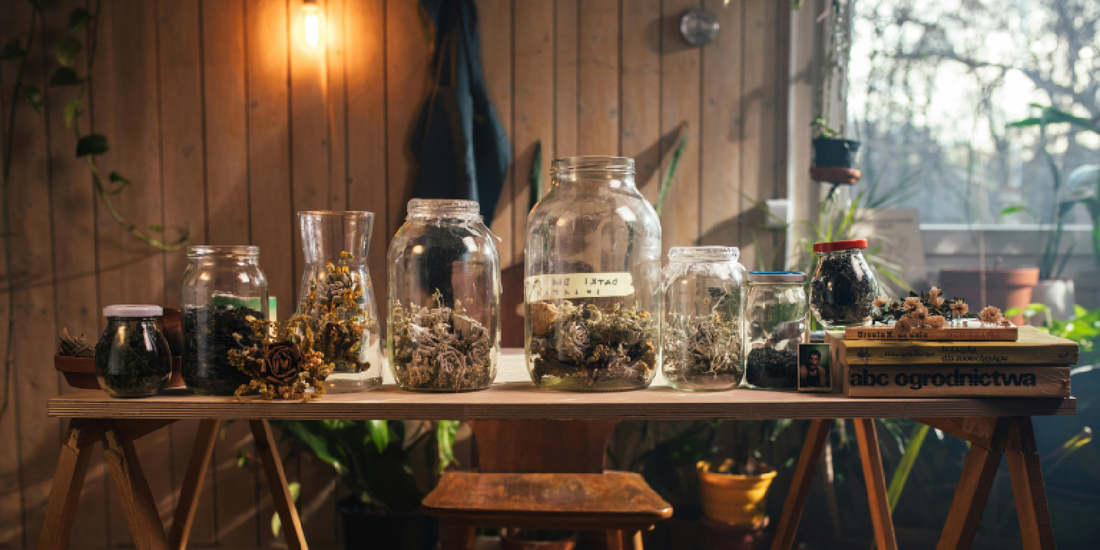
How Long Should You Leave Grow Lights On?
Share
If you're an indoor plant enthusiast or new to indoor gardening, chances are you've already heard about grow lights. These handy devices can transform any dim corner into a lush green haven. But the key question remains: how long should you leave grow lights on? Getting this right can mean the difference between vibrant foliage and drooping leaves.
In this comprehensive guide, we’ll explore everything you need to know about light timing—including light duration by plant type, signs of too much or too little light, and how the amoyls VerdantGlow S-Shaped 8-Tier Plant Shelf with Grow Lights can help you grow smarter.
🌱 Why Light Duration Matters in Indoor Gardening
Plants rely on a process called photosynthesis, which is fueled by light. When grown outdoors, sunlight provides a natural cycle that aligns with a plant’s biological needs. Indoors, however, it’s our job to replicate that.
Leaving your grow lights on too long can lead to light stress, leaf burn, or even stunt a plant’s natural resting phase. On the flip side, too little light results in weak stems, faded leaves, and poor growth.
The duration, intensity, and spectrum of light are all essential factors—but for now, let’s focus on the first: how long is ideal?
🌼 General Lighting Guidelines by Plant Type
Every plant is different. Some love full sun and long days; others prefer shade or short bursts of light. Here’s a quick guide:
|
Plant Type |
Daily Light Duration |
Notes |
|
Leafy Greens (lettuce, kale) |
12–16 hours |
Fast growers—more light speeds up harvest |
|
Herbs (basil, mint) |
12–16 hours |
Thrive under long hours of consistent light |
|
Flowering Plants (orchids, peace lilies) |
12 hours |
Too much light can inhibit blooming |
|
Succulents & Cacti |
10–12 hours |
Prefer strong but shorter light exposure |
|
Tropical Foliage (monstera, pothos) |
10–14 hours |
Mimic partial sun; rotate plants weekly |
|
Seedlings |
14–16 hours |
Need more light during early growth stage |
🔁 Tip: Always provide a dark period of at least 6–8 hours per day. Plants need rest, too!
💡 Signs You’re Leaving Grow Lights On Too Long
Not sure if you're overdoing it? Watch out for these signs:
- Curling or scorched leaf tips
- Yellowing leaves
- Brown patches on upper leaves
- Wilting even though soil is moist
- Delayed flowering or lack of new growth
These issues often occur when there’s too much exposure without adequate rest.
🌙 What Happens If Grow Lights Are Left On Overnight?
One common mistake beginners make is leaving grow lights on 24/7. It sounds efficient, but it’s counterproductive.
Plants use nighttime to respire and metabolize nutrients. Without this dark period:
- Photosynthesis becomes inefficient
- Root development slows
- Growth becomes erratic
- Stress hormones increase, weakening the plant
If you’re busy or forgetful, invest in a light timer—many models work with smart plugs or built-in timers, like those found on the VerdantGlow S-Shaped Plant Shelf by amoyls.
🔌 Why the amoyls VerdantGlow Shelf Makes Light Timing Easier
The VerdantGlow S-Shaped 8-Tier Shelf isn’t just a storage unit—it’s a full-spectrum grow system designed with both form and function in mind.
🌟 Key Lighting Features:
- Built-in full-spectrum grow lights on each tier
- Adjustable brightness for different plant types
- Smart timer compatibility for automatic light cycling
- Even light distribution thanks to vertical stacking
By placing your plants on different tiers based on their light needs, you can customize exposure without moving them around constantly.
🧠 Example:
- Place your succulents or herbs on upper tiers with 10–12 hour timers.
- Use mid-tiers for foliage plants with 12–14 hour timers.
- Lower tiers can house shade-loving plants with shorter exposures.
⏰ How to Set a Daily Light Cycle
Follow these basic steps to set the right light schedule:
- Determine your plant type’s light need (see chart above)
- Use a timer to set lights to turn on/off automatically
- Avoid breaking the cycle by turning lights on/off manually
- Observe your plants weekly for growth patterns
- Adjust seasonally if needed
Most indoor gardeners find the “16 on / 8 off” or “12 on / 12 off” schedules ideal for mixed collections.
📸 Real User Case: Sarah from Portland
“I struggled with browning leaves for months. Turns out I was overexposing my snake plant! Once I switched to a 10-hour cycle and used the amoyls shelf with its built-in timer, my plants perked up in days. Now I just set it and forget it.”
Many users find their biggest breakthroughs come not from more light—but the right amount.
🌤️ Do Seasons Affect Indoor Light Timing?
Yes! While your indoor setup can run year-round, plant behavior still responds to environmental cues like temperature and humidity.
During winter, when natural light is limited, you might want to increase artificial exposure by 1–2 hours.
In summer, when rooms may be naturally brighter or warmer, it’s safe to reduce grow light hours slightly.
📋 Summary: Best Practices for Grow Light Timing
✅ Know your plant type
✅ Set a timer (don’t leave lights on 24/7)
✅ Adjust light duration based on the season
✅ Use a structured grow setup like Amoyls VerdantGlow
✅ Watch for plant signals and adjust accordingly
🌿 Final Thoughts
Indoor gardening is a journey. It’s not just about giving your plants light—it’s about giving them the right light for the right amount of time. With the amoyls VerdantGlow S-Shaped Plant Shelf with Grow Lights, you have the structure, design, and intelligence to grow confidently.
Whether you're nurturing a single pothos or building a lush green wall, knowing how long to leave grow lights on is a cornerstone of successful plant care. Set your timers, watch your plants thrive, and enjoy the transformation of your home into a lush botanical retreat.
Looking for the perfect solution?
Check out the amoyls VerdantGlow S-Shaped Plant Shelf and see how effortless indoor gardening can be.
